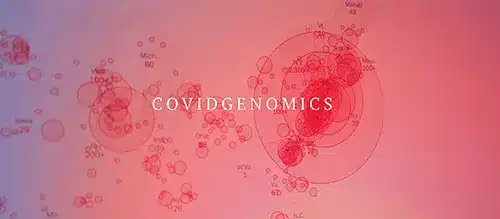JANUARY 2020 – APRIL 2020 RESEARCH HIGHLIGHTS
NYGC’s COVID-19 Research Activities
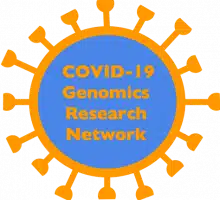
In March and April, Tom Maniatis convened the first meetings for the COVID-19 Genomics Research Network, a new multi-institutional, multidisciplinary consortium that is undertaking a wide array of large-scale sequencing and analysis projects to advance our understanding of the deadly COVID-19 disease. Over 250 scientists and clinicians, representing the leading academic medical centers and research institutions across the region, are participating in these virtual meetings. NYGC core faculty members and senior scientists are also actively involved in developing joint collaborative projects within the Network, including a building a regional data commons to house de-identified clinical, omics, and imaging data for the research community. Tom, Sam Aparicio, PhD, Senior Scientific Director, Cancer Genomics, and Mike Zody, PhD, Scientific Director of Computational Biology, are serving as the lead NYGC representatives and are designing collaborative genomic studies; Sam Aparicio, Mike Zody, and Charles Gagnon, Senior Director, IT Infrastructure, are working together to design the data commons; and Sam Fennessey, Scientific Project Manager, is overseeing all project management related to our work with this consortium.
The Network will advance COVID-19 clinical knowledge and genomic research through:
- Viral genome sequencing: To understand how the virus mutates and spreads.
- Host RNA sequencing: To better understand infection and how the immune system responds.
- Large-scale genome sequencing of patients: To identify how host genetic variation impacts disease course and severity.
- Single-cell RNA sequencing and spatially-resolved genomic assays: To understand the inter- and intra-cellular interactions during infection and how they lead to different response and clinical outcome.
- Clinical data integration and sharing: Establishment of a data commons that aggregates clinical and research data, using common institutional review board (IRB) approvals and consents agreed to by the participating hospitals. Rapid, real-time sharing of detailed de-identified clinical, omics, and imaging data from large numbers of patients that could provide essential insights that could be immediately impactful on optimal patient care and long-term management of the pandemic.
The Network is supported by a new portal, covidgenomics.org, built by NYGC’s IT department, which includes COVID-19 related news, events, protocols, tools, and recent publications.
The COVID-19 Genomics Research Network is modeled after similar networks and consortia that have been arising throughout the world. On March 25, GenomeWeb interviewed Tom and Mike Zody on a new UK-based research consortium providing UK policymakers with a clearer picture of the spread of the epidemic through next-generation sequencing. In this interview, Tom and Mike also discussed NYGC’s emerging plans to create the new NYGC-organized consortium. Read the GenomeWeb interview here. In April, GenomeWeb further interviewed Tom and Mike about the Network and its plans; read that in-depth feature here.
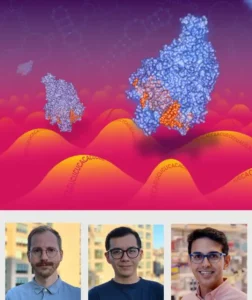
TARGETING RNA: Cas13 enzymes traveling along a RNA landscape. Artist: Christian Stolte; co-first authors, Hans-Hermann Wessels and Alejandro Méndez-Mancilla, and study senior author Neville Sanjana (l-r, bottom).
As an example of how NYGC’s ongoing scientific work can help support efforts in COVID-19-related research, a new study from the lab of NYGC Core Faculty Member Neville Sanjana, PhD, was published in Nature Biotechnology on March 16. The study, Massively parallel Cas13 screens reveal principles for guide RNA design, described a new CRISPR screen technology to target RNA, and had been made available to the scientific community as a preprint since December 2019. The study was also co-led by postdoctoral scientist Hans-Hermann (Harm) Wessels, PhD, and doctoral student Alejandro Méndez-Mancilla. The study develops a new kind of high-throughput forward genetic screen in human cells using the RNA-targeting CRISPR enzyme Cas13. By testing thousands of different Cas13 guide RNAs and design parameters, the team built a predictive framework for identifying guide RNAs with potent knock-down activity. In recent months, the team applied the new technology to analyze the coronavirus since it contains a RNA – not DNA – genome. Using the model derived from their screens, the researchers identified optimal guide RNAs that could be used for future detection and therapeutic applications. The team has made the predictions for Cas13 guide RNAs for a strain of SARS-CoV-2 isolated in New York available online for other researchers to use and build on. Read more about this technology here. Recently, Neville was interviewed by the Wall Street Journal regarding how researchers were tracking the virus to gain insight on transmission patterns. Read that article here.
On April 10, Type 2 and interferon inflammation strongly regulate SARS-CoV-2 related gene expression in the airway epithelium, a National Jewish Health-led study with NYGC scientists among its co-authors, was posted to bioRxiv. In this study, researchers explored that disparity in coronavirus outcomes may reflect different airway levels of the SARS-CoV-2 receptor 35 ACE2 & spike protein activator TMPRSS2. The research team analyzed nasal airway transcriptome data from 695 children and drew on WGS data and analysis performed at the NYGC through the National Heart, Lung and Blood Institute Trans-Omics in Precision Medicine program. The study revealed mechanisms likely influencing SARS-CoV-2 infectivity and COVID-19 clinical outcomes. Mike Zody and Soren Germer, PhD, SVP, Genome Technologies, are co-authors on the study.
A modified protocol of ECCITE-seq, the NYGC-developed extension of the NYGC single-cell analysis tool CITE-seq for use with CRISPR screens, was part of the development of a new method that enables rapid assessment of T cell repertoires for research and diagnostics, with potential applications in studying COVID-19 immune responses. Peter Smibert, PhD, Senior Manager, NYGC Technology Innovation Lab, and Stephanie Hao, Associate Scientist, are co-authors on the UC Santa Cruz-led study, High throughput pMHC-I tetramer library production using chaperone-mediated peptide exchange, which was published in Nature Communications on April 20. Read more about the study here.
NYGC Core Faculty Member Marcin Imielinski, MD, PhD, who holds a joint appointment at Weill Cornell Medicine (WCM), has been working with WCM colleague and NYGC Affiliate Member Chris Mason, PhD, on the latter’s development of a rapid response test for COVID-19 that leverages loop-mediated isothermal amplification (LAMP), a rapid gene identification technique, and indicates a positive result with a color change. The Imielinski Lab’s main contribution to this critical initiative has been to the analysis of metatranscriptomes across the hundreds of cases to characterize a SARS-CoV-2 genomic subtype that comprises most of NYC cases. The preprint detailing the LAMP assay, Host, Viral, and Environmental Transcriptome Profiles of the Severe Acute Respiratory Syndrome Coronavirus 2 (SARS-CoV-2), was posted on bioRxiv on April 20.
NYGC Plans GeMMA Initiative to Build Largest-Ever Integrated Mental Health Genomic/Clinical Database and Discovery Platform
In collaboration with New York State agencies, member institutions, and industry partners, the NYGC is in the planning stages of a Genomic Medicine for Mental Health Advancement (GeMMA) initiative with the goal of developing the largest-ever mental health database and discovery platform that will include genomic and clinical information. The platform will be built by integrating genomic and clinical data leveraging a key clinical data resource: the New York State Office of Mental Health’s Psychiatric Services and Clinical Knowledge Enhancement System (PSYCKES), a large-scale database of health records of patients who receive behavioral health services or psychotropic medication that are paid for by Medicaid in New York State.
If successful, a rollout of the GeMMA platform would occur in phases, with an expected cohort of 200,000 patients with fully integrated clinical and genomic data which would be available to researchers and clinicians within the next five years.
Through its integration of genomics data into existing electronic health records, Thomas Lehner envisions that GeMMA may also provide a framework that could expand to other diseases. “It has been an aspirational goal, ever since the Human Genome Project, to advance genomic medicine through such data integrations. With GeMMA, we have a wonderful opportunity to move from aspiration to implementation.” This project is being developed through the NYGC Affiliate Member Neuropsychiatric Disease Working Group.
LAB UPDATES
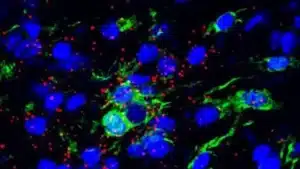
Tom Maniatis is senior author of the recent ALS study The Loss of TBK1 Kinase Activity in Motor Neurons or in All Cell Types Differentially Impacts ALS Disease Progression in SOD1 Mice, published in Neuron in March. In this study, the research team found that ALS-associated mutations in TBK1 can have both positive and negative effects on the progression of disease in mice genetically modified to have ALS-like symptoms. These findings provide both genetic and mechanistic insights that could lead to novel strategies for the development of treatments for ALS. Read “A Double-edged Sword: Scientists Identify Gene That Initially Slows, Then Later Accelerates, Disease Progression of ALS in Mice,” the Columbia | Zuckerman Newsroom feature on this study, here.

NYGC’s Center for Genomics of Neurodegenerative Disease, led by Hemali Phatnani, PhD,
Director, has been making progress through a new partnership with Technion-Israel Institute of Technology, announced by Governor Cuomo this past summer, to complete the genetic mapping of both Israeli and Arab patients with ALS in Israel. Hadassah Medical Center and Tel Aviv Sourasky Medical Center, both members of the Israel ALS Association (IsrALS), have now joined the NYGC ALS Consortium. This brings the number of Israel-based institutions in the Consortium to three (Weizmann Institute is also a member) and total Consortium members to 34. Over 70 samples from Israel have already been sent to the CGND for sequencing and analysis. Once all samples are collected, sequenced, and analyzed, CGND researchers will compare that data to the nearly 4,500 ALS samples currently available through the NYGC ALS Consortium’s data portal.
In partnership with The ALS Association and its Greater New York chapter, the CGND is planning to hold the next meeting of NYGC ALS Consortium members in 2021. The last such gathering, held in 2018, attracted over 100 ALS researchers and clinicians from around the globe.
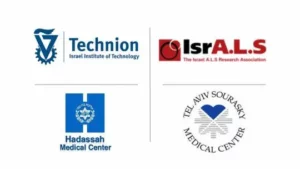
In January, Hemali was interviewed on the CUNY-TV show “Building NY Stories.” In the interview, the interviewer depicts the NYGC as “a one-of-a-kind research institution,” and Hemali provides an overview of NYGC’s ALS research. She also shares how reading Perry Mason novels with her forensic pathologist father started her on her path to becoming a scientist. Hemali also describes how she became involved in ALS research while working with Tom Maniatis, first in his lab at Harvard, then at Columbia University. Watch the full interview here.
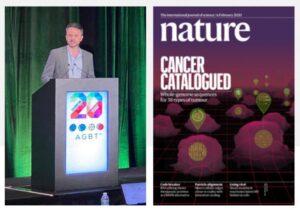
NYGC Core Faculty Member Marcin Imielinski, MD, PhD, is among the contributors to the studies showcased in the “Cancer Catalogued” issue of Nature, published in February. Marcin and his lab are part of a working group for the Pan-Cancer Analysis of Whole Genomes project, the international collaboration that is conducting integrative analysis of more than 2,600 whole cancer genomes and their matching normal tissues across 38 tumor types. In its tee-up to the issue, Nature editors noted that, “Taken together, these papers offer a fresh perspective on the genetic complexity of cancer and provide a valuable resource for the exploration of the biological changes that drive the development of tumours.” Check out this study collection here.
Also in February, Marcin was a speaker at the Advances in Genome Biology and Technology general meeting, presenting on “Unraveling the allelic structure around recurrent complex structural variant patterns in cancer using optical mapping and linked-reads.” This talk draws on Marcin’s ongoing research detailed in his preprint Novel patterns of complex structural variation revealed across thousands of cancer genome graphs, which was first posted on bioRxiv in November 2019. Read more about this research, which involves analysis of 2,833 tumor whole genome sequences and introduces three complex rearrangement phenomena: pyrgo (“towers”), rigma (“chasms”), and tyfonas (“typhoons”). In January, GenomeWeb published a detailed article about Pore-C, the chromatin capture method developed by the Imielinski Lab in partnership with Oxford Nanopore Technologies.
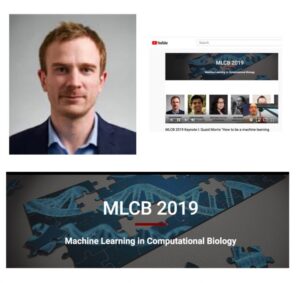
Launching a stand-alone conference on machine learning for the genomics community has been a major focus for NYGC Core Faculty Member David Knowles, PhD. David, who holds a joint appointment at Columbia University, served on the co-organizing committee to spin off the Machine Learning in Computational Biology (MLCB) conference as a separate event, due to high interest in the field. It was previously held as a workshop within the Conference on Neural Information Processing Systems (NeurIPS).
The reinvented MLCB 2019 conference was held in Vancouver, British Columbia in December, co-located with the NeurIPS conference, but with its own sponsors, including Recursion, Deep Genomics, and Amazon. An archive of video presentations from this conference is now available on a new MLCB YouTube channel.
David was also co-organizer of the National Center for Biotechnology Information (NCBI) “Single Cell in the Cloud” Hackathon held on-site at the NYGC in January. Nasrine Metic, a visiting grad student from École Polytechnique Fédérale de Lausanne in Switzerland, has been working in the lab on the team’s research into predicting splicing changes after knock-down of RNA-binding proteins.
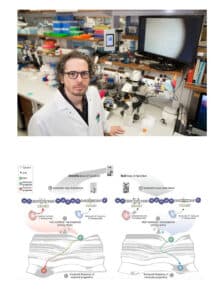
NYGC Core Faculty Member Dan Landau, MD, PhD, who holds a joint appointment at Weill Cornell Medicine (WCM), is senior author of the collaborative study DNA methylation disruption reshapes the hematopoietic differentiation landscape, published in Nature Genetics in March. The study team, consisting of researchers from WCM, Memorial Sloan Kettering Cancer Center, and Icahn School of Medicine at Mount Sinai, leveraged single-cell technology to track gene activity in hematopoietic stem cells. The scientists uncovered that genome-wide disruptions of methylation likely affect the behavior of a critical set of transcription factors. “These findings help us better understand how these common mutations start hematopoietic stem cells on the path to malignancy,” notes Dan in “Study Illuminates Early Steps on the Road to Blood Cancers,” the WCM news story issued about the collaboration.
In January, Dan was recipient of a new ASPIRE award from The Mark Foundation for Cancer Research to develop liquid biopsy methods for pre-invasive lesions. Dan previously received an inaugural ASPIRE Award in 2018.
He was also awarded funding from Tri-Institutional’s Stem Cell Initiative Award to develop novel single-cell methods to study hematopoietic stem cell fate decisions.
Dan is also serving on the scientific advisory board of new WCM and NYGC spinout company C2i Genomics, headquartered near the NYGC on Varick Street with an R&D center in Israel. The company is offering an ultra-sensitive liquid biopsy assay that allows physicians to monitor their patient treatment response and detect treatment failure or disease recurrence. The management of the spinout includes former Landau Lab member Asaf Zviran, PhD, as Chief Scientific Officer. For more, visit the C2i Genomics website.
Landau Lab team members Anna Nam, MD, Hematopathology Fellow, and Federico Gaiti, PhD, Postdoctoral Associate, were awarded fellowships from the Leukemia Lymphoma Society in February. Anna also received notice of being awarded an early career K08 grant from the National Heart, Lung, and Blood Institute in March.
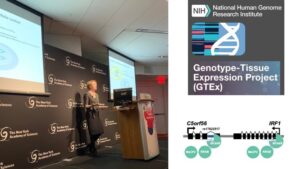
In late February, NYGC Core Faculty Member Tuuli Lappalainen, PhD, posted the preprint An autoimmune disease risk variant has a trans master regulatory effect mediated by IRF1 under immune stimulation, on bioRxiv. The study draws and builds on data from an earlier collaborative study conducted by the lab, Genetic Regulatory Effects Modified by Immune Activation Contribute to Autoimmune Disease Associations, which was published in Nature Communications in 2017. In the new study, the team performed trans expression quantitative trait loci (eQTL) analysis and CRISPR silencing and editing to identify the likely molecular mechanism for an autoimmune disease associated genetic locus. They identify a master regulatory effect mediated by transcription factor IRF1 and indicate the causal genetic variant, enhancer mechanism, local target gene, affected pathway, and stimulus-specific cellular context. Tuuli, who holds a joint appointment at Columbia University, is senior author on the study; Lappalainen Lab member Margot Brandt, PhD, is first author.
Also in February, Tuuli was an invited speaker at the “CRISPR: New Frontiers” event that was held at the New York Academy of Sciences and co-organized by fellow NYGC Core Faculty Member Neville Sanjana, PhD. Tuuli presented on GTEx and her research into exploring gene expression and editing of regulatory variants. In February, Tuuli was a keynote speaker at the Eighth Annual Klarman Cell Observatory Retreat at the Broad Institute.
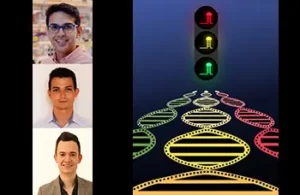
NYGC Core Faculty Member Neville Sanjana, PhD, who holds joint appointments at NYU and NYU Medical School, and his team recently conducted a “competition” to evaluate different DNA-targeting CRISPR enzymes. This study was co-led by postdoctoral scientists Mateusz Legut, PhD, and Zharko Daniloski, PhD. The study, entitled High-Throughput Screens of PAM-Flexible Cas9 Variants for Gene Knockout and Transcriptional Modulation, was published in Cell Reports in early March. The work builds a performance scorecard of several new Cas9 enzymes and compares their ability to modulate genes in several ways, including knock-out, gene activation, and gene repression. It also introduces a framework to evaluate multiple different CRISPR enzymes head-to-head, which can be helpful to compare the growing number of new CRISPR enzymes. As part of their analysis, the team also engineered a new Cas9 enzyme, termed xCas9-NG, that results in stronger gene activation with minimal target sequence requirements. Read more about their work here.
Neville was also a co-author of Applying genome-wide CRISPR-Cas9 screens for therapeutic discovery in facioscapulohumeral muscular dystrophy, published in Science Translational Medicine in March. This collaborative study used a genome-wide CRISPR-Cas9 loss-of-function screen to identify therapeutic targets for muscular dystrophy.
Outside of the lab, Neville was a co-organizer of the “CRISPR: New Frontiers” meeting held at the New York Academy of Sciences in February. His talk on “New Frontiers in Pooled CRISPR Screens” was one of several presentations at this meeting, which also featured talks from Feng Zhang, PhD; Luciano Marraffini, PhD; Sam Sternberg, PhD,: and fellow NYGC Core Faculty Member Tuuli Lappalainen, PhD. In addition, Neville was a speaker at the Non-Coding Genome Workshop at the Institut Curie in Paris and a keynote speaker for the Leducq Consortium Young Investigators meeting. In March, Neville discussed a new CRISPR-based therapy to treat a rare genetic disease that causes blindness with Healthline. “Now you’re seeing glimpses of what that future is — a future where all serious genetic disorders might have a specific genetic therapy to treat them,” Neville noted.
In early 2020, the Sanjana Lab also welcomed several new members to the group, including new postdoctoral scientists Evan Geller, PhD, and Yuchen Xie, PhD, and MD-PhD student Zoran Gajic. Welcome aboard!
Satija Lab

In March, Satija Lab member Andrew Butler, a PhD student at NYU, received the 2020 Harold M. Weintraub Graduate Student Award. This prestigious honor, which is sponsored by the Basic Sciences Division of the Fred Hutchinson Cancer Research Center, recognizes outstanding achievement during graduate studies in the biological sciences.
UPDATES FROM RESEARCH SEQUENCING & ANALYTICS, CLINICAL LAB, AND TECHNOLOGY INNOVATION LAB
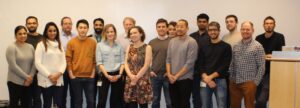
Research Sequencing & Analytics
Like many of our teams throughout the NYGC, the Research Sequencing & Analytics team (Bioinformatics, Computational Biology, and Production Lab/Sequencing Operations) will be core contributors to our COVID-19 Genomics Research Network activities. Alongside this new focus, the team is also continuing to advance its other projects and sharing its expertise, insights, and innovations in bioinformatics, sequencing analysis, and computational biology with the scientific community.
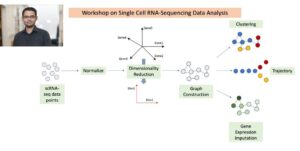
Case in point: The NYGC Bioinformatics team partnered with Memorial Sloan Kettering Cancer Center to organize a “virtual workshop” on single-cell RNA sequencing and analysis, which was held March 30-April 10. NYGC’s Roshan Sharma, PhD, Bioinformatics Scientist, RNA, (pictured with a screenshot from the workshop), served as one of the workshop instructors. This workshop was designed specifically in response to the pandemic to provide area researchers who are working remotely an opportunity to better understand and explore the computational side of data. The workshop was recorded and is available here.
The team also had a strong presence at the Advances in Genome Biology and Technology general meeting held in Marco Island, Florida in late February, one of the last major genomics events to be held in person prior to the current shift to virtual meetings. Presentations included posters by Rajeeva Musunuri, Senior Bioinformatics Programmer, and Wayne Clarke, PhD, Bioinformatics Scientist, and a talk by Uday Evani, Senior Software Engineer, Computational Biology, on the NYGC Bioinformatics team’s recent release of high-coverage sequencing of the 2504 samples from the 1000 Genomes Project.
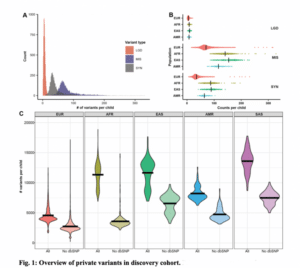
The Computational Biology team is also deeply engaged with ongoing autism research in collaboration with the SFARI (Simons Foundation Autism Research Initiative) and SPARK (Simons Foundation Powering Autism Research for Knowledge) programs. In February, the preprint of the SPARK Consortium study Recent ultra-rare inherited mutations identify novel autism candidate risk genes was posted on bioRxiv. In this study, researchers used whole-genome sequencing data from 3,474 families to investigate how ultra-rare inherited mutations, those that are unique to a family and are likely to disrupt gene function, may be a factor in this complex genetic disorder. The scientists identified distinct gene candidates and functional networks in their findings. NYGC Associate Member Evan Eichler, PhD, is senior author of the study; other NYGC co-authors on the study include Mike Zody; Lara Winterkorn, Scientific Project Manager; Uday Evani; and Marta Byrska-Bishop, Bioinformatics Scientist.
Mike Zody is also among the researchers quoted in GenomeWeb’s “The Decade in Genomics: CRISPR, Single Cells, Long Reads, Clinical and Consumer Applications” roundup that ran late March. Read that article here.
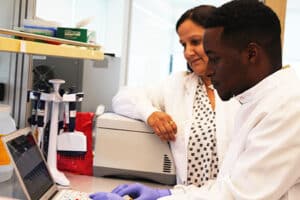
Vaidehi Jobanputra, PhD, NYGC’s Director of Molecular Diagnostics and Head of the NYGC Clinical Lab, with Senior Clinical Laboratory Supervisor Dino Robinson
The NYGC Clinical Lab, led by Vaidehi Jobanputra, PhD, is continuing to work with physicians across the United States who are ordering the lab’s cutting-edge tests in the areas of genetics and oncology for their patients. The team’s lab staff are also continuing to work onsite to support several ongoing clinical projects. In preparation for COVID-19 testing, the lab has recently received approval from the New York State Department of Health to perform molecular testing for SARS-CoV-2 under a virology permit. The lab now has a group of four staff from Renegade Bio, a public benefit company, working onsite in the lab to perform this testing. Vaidehi is overseeing the testing, with the support of the Clinical Lab and IT teams, with more than 60 tests already completed.
Earlier this year, the NYGC announced that the lab had received approval from the New York State Department of Health to offer its clinical constitutional whole genome sequencing (WGS) testing to clinicians for their patients. The test provides physicians with the most complete package of genomic data available for patients with rare and undiagnosed diseases, as well as for patients seeking predispositional genetic testing, i.e., a systematic early detection or exclusion of a hereditary disease, a genetic predisposition to a disease, or to determine whether they carry a predisposition which may produce a disease later in life.
Since acquiring conditional approval for the constitutional WGS test a few years ago, the lab has developed new tools and an updated pipeline that further enhance its capabilities. The test is now performed using Illumina NovaSeq sequencers, allowing for greater speed and throughput than when run on the HiSeq X platform. Sequencing reads are now mapped to the hg38 reference human genome build, considered to be the most accurately sequenced genome build to date. These updates provide an opportunity to uncover novel genetic etiologies that were previously not able to be identified by older reference genome builds.
In February, Vaidehi gave an invited talk “Using Whole Genome Sequencing in Practice,” at a meeting of the New York State Genetics Task Force. Through educational, networking and professional development opportunities, this nonprofit professional organization seeks to make quality medical genetics services accessible to all New York State residents.
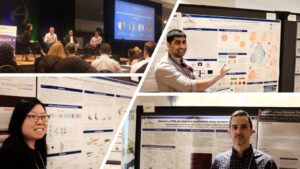
Technology Innovation Lab
There is “real power” in this “moment where we and many other groups are coupling the measurement of RNA with other modalities and using these measurements to infer a phenotype or attribute some kind of a behavior to a cell,” was how Peter Smibert, PhD, Senior Manager, NYGC Technology Innovation Lab, helped to tee up the discussion at the “Advances and Future Perspectives In Single Cell Analysis” panel held at the Precision Medicine World Congress in January. Peter was an invited speaker for this panel, which included Charlie Silver from Mission Bio and Hanlee Ji from Stanford University. Peter (pictured top left at the panel in photo) noted that combined omics tools have led to faster assays and deeper analysis and will help advance discoveries to impact patient health. View the whole discussion, moderated by Agilent Technologies’ Allison Balmer, here.
The lab team also showcased its tools and innovations at the Advances in Genome Biology and Technology general meeting in February. Pictured in photo starting top right and then clockwise are team members who presented posters: Kunal Pandit, PhD, Research Engineer, on “HiSeqX for Immunoflorescence Methods”; Will Stephenson, PhD, Senior Research Engineer on “Detection of RNA Structure and Modifications Using Nanopore Sequencing”; and Stephanie Hao, Associate Scientist, with her poster outlining an expanded antibody panel to use with NYGC-developed multi-model single-cell analysis tool CITE-seq.
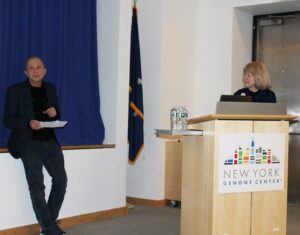
2020 began with a flurry of NYGC events. After joining the NYGC in January as our new Scientific Director of Neuropsychiatric Disease Genomics, Thomas Lehner moderated a talk by internationally renowned geneticist Mary-Claire King, PhD, on her research into the genetics of schizophrenia. In November 2019, Dr. King joined the NYGC as a Senior Associate Core Member on a consulting basis.
Following the March 3rd meeting the New York Cancer Genomics Research Network, all on-site events have gone virtual or were postponed due to the COVID-19 outbreak.
During this time, we are maintaining the momentum of our scientific collaborations and convening our working groups and lectures virtually. NYGC virtual events held to date include ongoing working group committee meetings, the March 19 meeting of the Very Rare Cancer Consortium Tumor Board, and the April 7 New York Cancer Genomics Research Network Meeting, which had over 130 participants!
NYGC posts all upcoming event information, including available recordings of virtual meetings, on the Events section of our website.
STAY CONNECTED AT NYGC
Be sure to watch your emails for ongoing staff communications from leadership and Outlook invites to upcoming All Hands meetings, virtual social hours, and more. The NYGC Communications team also posts regular news updates and maintains a listing of NYGC scientific publications and preprints on the nygenome.org website. Watch for a newly enhanced site to launch soon! Also be sure to follow the NYGC on Twitter at @nygenome.
